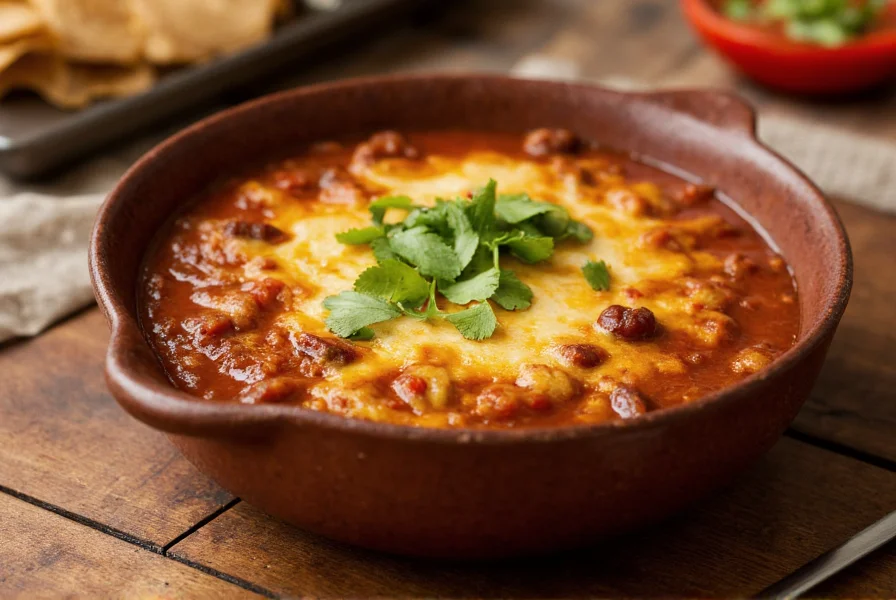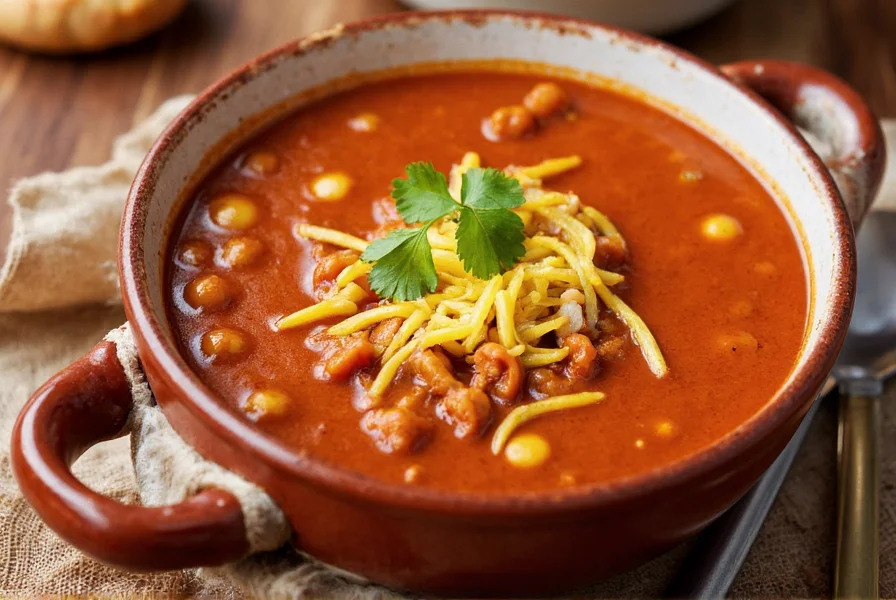
The Evolution of a Mexican Classic
Chili relleno soup represents a clever adaptation of Mexico's beloved chile relleno, which traditionally features whole poblano peppers stuffed with cheese, dipped in egg batter, and fried. While the original dish requires careful preparation of individual peppers, the soup version captures those signature flavors in a more accessible format. This evolution likely emerged from home cooks seeking to enjoy the complex flavors of roasted poblanos and melted cheese in a simpler, broth-based preparation.
Food historians note that soup adaptations of traditional Mexican dishes often developed in regions where ingredients were scarce or cooking time was limited. The soup version maintains the essential elements—roasted poblano peppers, cheese, and tomato broth—while eliminating the labor-intensive stuffing and frying process. This makes authentic chili relleno soup recipe achievable for home cooks without specialized culinary skills.
Essential Ingredients for Authentic Flavor
The magic of traditional Mexican chili relleno soup lies in its carefully balanced ingredients. Each component serves a specific purpose in creating the complex flavor profile that defines this dish:
| Ingredient | Function | Authentic Substitutes |
|---|---|---|
| Fresh Poblano Peppers | Provides mild heat and distinctive roasted flavor | Ancho chiles (dried) or bell peppers (milder) |
| Queso Fresco or Monterey Jack | Creates creamy texture and authentic cheesy finish | Oaxaca cheese or mild cheddar (less traditional) |
| Homemade Chicken or Vegetable Stock | Forms flavorful base that carries pepper essence | Low-sodium store-bought (acceptable in time crunch) |
| Fresh Tomatoes or Tomato Puree | Adds acidity and depth to balance richness | Canned fire-roasted tomatoes (winter option) |
Step-by-Step Preparation Guide
Creating the perfect easy homemade chili relleno soup requires attention to specific techniques that maximize flavor development:
- Roast and peel poblano peppers: Place 4-5 whole poblanos directly over gas flame or under broiler, turning frequently until evenly blackened. Transfer to sealed bag for 10 minutes, then remove skins while retaining all juices.
- Create flavor foundation: In large pot, sauté 1 diced white onion and 3 minced garlic cloves in 2 tbsp olive oil until translucent. Add 2 cups roasted, peeled poblanos (reserving some for garnish) and cook 5 minutes.
- Build broth base: Pour in 6 cups homemade stock and 1 (14oz) can fire-roasted tomatoes. Simmer 20 minutes to allow flavors to meld. For vegetarian chili relleno soup variation, use vegetable stock.
- Blend for smooth texture: Carefully transfer mixture to blender (in batches if needed) and blend until smooth. Return to pot over medium heat.
- Add signature cheese element: Gradually stir in 8oz crumbled queso fresco or shredded Monterey Jack until melted. Do not boil after adding cheese to prevent separation.
- Final seasoning: Adjust with salt, freshly ground pepper, and 1 tsp cumin. For extra depth, add 1 tbsp masa harina dissolved in water.

Serving Traditions and Modern Variations
Authentic preparation of chili relleno soup includes specific serving customs that enhance the experience:
- Traditional presentation: Serve immediately in pre-warmed bowls with generous toppings of diced avocado, fresh cilantro, and crumbled queso fresco
- Accompaniments: Offer warm corn tortillas or crusty bread for dipping, plus lime wedges for brightness
- Dietary adaptations: For gluten-free chili relleno soup, ensure all broth ingredients are certified gluten-free and use corn masa instead of flour-based thickeners
- Protein additions: While traditional versions focus on cheese, many home cooks add shredded chicken or black beans for heartier meals
Avoiding Common Preparation Mistakes
Even experienced cooks encounter challenges with this dish. Understanding these pitfalls ensures perfect results every time:
- Pepper preparation error: Skipping the roasting step results in raw, bitter flavor. Always roast and peel poblanos thoroughly.
- Cheese separation: Adding cheese to boiling soup causes curdling. Maintain gentle heat below simmering point when incorporating cheese.
- Flavor imbalance: Over-reliance on canned ingredients creates one-dimensional taste. Balance with fresh aromatics and proper seasoning throughout cooking.
- Texture issues: Incomplete blending leaves fibrous pepper chunks. Blend thoroughly in batches, using tamper if needed.
Storage and Reheating Best Practices
Chili relleno soup develops richer flavor overnight, making it excellent for meal prep:
- Refrigeration: Store in airtight container for up to 4 days. The cheese may separate slightly when cold—simply re-emulsify during reheating.
- Reheating: Warm gently over medium-low heat, stirring frequently. Add small amounts of broth if soup has thickened too much.
- Freezing: Freeze without cheese for best results. Thaw overnight, then reheat and add fresh cheese just before serving.
- Flavor development: Like many brothy dishes, chili relleno soup vs traditional chili relleno benefits from resting time—the flavors deepen significantly after 24 hours.
Frequently Asked Questions
Can I make chili relleno soup without roasting the peppers?
While possible, skipping the roasting step significantly impacts flavor. Roasting develops the complex, smoky notes essential to authentic chili relleno soup. If short on time, use 2-3 tbsp roasted poblano puree from a jar as substitute, but fresh roasted peppers deliver superior taste.
What's the best cheese for traditional chili relleno soup?
Queso fresco provides the most authentic flavor and texture, melting partially while maintaining some structure. Monterey Jack offers a good alternative with similar melting properties. Avoid pre-shredded cheeses which contain anti-caking agents that prevent proper melting.
How can I adjust the heat level in chili relleno soup?
Poblano peppers naturally vary in heat. For milder soup, remove all seeds and membranes thoroughly. To increase heat, add 1-2 minced jalapeños during the sauté step or a pinch of cayenne pepper at the end. Remember that heat intensifies slightly as the soup sits.
Can I make this soup in a slow cooker?
Yes, but with modifications. Complete the pepper roasting and initial sauté steps first, then transfer to slow cooker with stock and tomatoes. Cook on low 4-6 hours, then blend and add cheese during the last 30 minutes. Avoid adding cheese too early as prolonged cooking affects texture.











 浙公网安备
33010002000092号
浙公网安备
33010002000092号 浙B2-20120091-4
浙B2-20120091-4